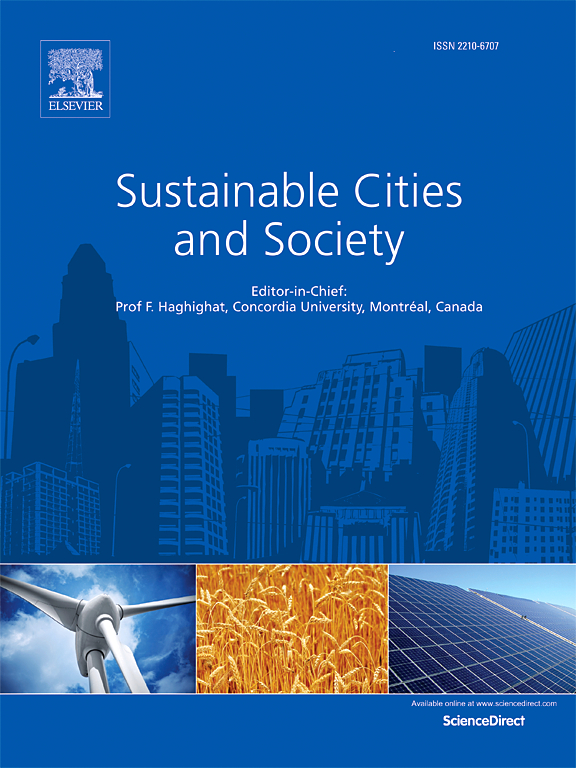Effects of complex skyscraper geometries on wind energy potentials of high-density urban central business district: A case study of the Lujiazui blocks
IF 10.5
1区 工程技术
Q1 CONSTRUCTION & BUILDING TECHNOLOGY
引用次数: 0
Abstract
The wind energy resources of high-rise buildings have been increasingly becoming one of the most important sources for achieving zero-carbon buildings and cities. However, due to the lack of understanding regarding the relationship between the wind energy potential and the complex geometries of the central business district (CBD), the developments of wind energy utilizations were severely limited. Employing validated CFD simulations, this research has studied the core skyscraper representatives of the Lujiazui CBD in Shanghai to reveal the correlations between the aforementioned complex geometries and key indicators of wind energy resources. The potential locations of wind turbine installations hadd been analyzed in detail. It has been found that to achieve higher wind power potentials, the representative floor planes should opt for rounded or smoothly chamfered shapes rather than sharp-edged polygons or rectangles. Besides, the roof profile should favor conical and semi-circular shapes over a flat roof, and the outer edges of extended planes are more suitable for installing wind turbines. For twin skyscrapers, the excessive angles between internal clamping channels and the prevailing wind directions should be avoided. The results can provide scientific and practical references for the optimizations of complex forms of skyscrapers in urban CBD blocks.
求助全文
约1分钟内获得全文
求助全文
来源期刊

Sustainable Cities and Society
Social Sciences-Geography, Planning and Development
CiteScore
22.00
自引率
13.70%
发文量
810
审稿时长
27 days
期刊介绍:
Sustainable Cities and Society (SCS) is an international journal that focuses on fundamental and applied research to promote environmentally sustainable and socially resilient cities. The journal welcomes cross-cutting, multi-disciplinary research in various areas, including:
1. Smart cities and resilient environments;
2. Alternative/clean energy sources, energy distribution, distributed energy generation, and energy demand reduction/management;
3. Monitoring and improving air quality in built environment and cities (e.g., healthy built environment and air quality management);
4. Energy efficient, low/zero carbon, and green buildings/communities;
5. Climate change mitigation and adaptation in urban environments;
6. Green infrastructure and BMPs;
7. Environmental Footprint accounting and management;
8. Urban agriculture and forestry;
9. ICT, smart grid and intelligent infrastructure;
10. Urban design/planning, regulations, legislation, certification, economics, and policy;
11. Social aspects, impacts and resiliency of cities;
12. Behavior monitoring, analysis and change within urban communities;
13. Health monitoring and improvement;
14. Nexus issues related to sustainable cities and societies;
15. Smart city governance;
16. Decision Support Systems for trade-off and uncertainty analysis for improved management of cities and society;
17. Big data, machine learning, and artificial intelligence applications and case studies;
18. Critical infrastructure protection, including security, privacy, forensics, and reliability issues of cyber-physical systems.
19. Water footprint reduction and urban water distribution, harvesting, treatment, reuse and management;
20. Waste reduction and recycling;
21. Wastewater collection, treatment and recycling;
22. Smart, clean and healthy transportation systems and infrastructure;
 求助内容:
求助内容: 应助结果提醒方式:
应助结果提醒方式:


